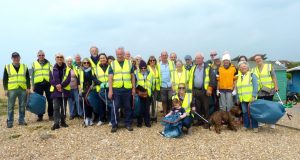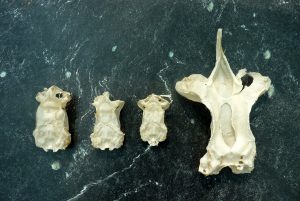At Ferring Conservation Group’s June meeting they welcomed David Bathurst the author of many books about walking, including the Sussex Hospice Trail. David’s talk covered six walks in West Sussex out of the series of 19 named long distance walks that link the areas that are served by Hospices throughout East and West Sussex. The initial aim was to make a trail that will be used for fundraising events or just enjoyed by walkers.
David is an indefatigable walker who embraces the challenges of walking the strenuous South Downs Way but also savours the more gentle walks on the relatively flat terrain of the rural path of a long lost canal as it crosses arable fields, allowing time to absorb and appreciate the wildlife along the way.
David gave some examples of some of the walks to an audience of 78; a good attendance on such a warm evening.
Walk 1 is a 10 mile linear walk from Chichester railway station to Barnham railway station that forms the first stretch of the Hospice Trail. The route passes by St Winifred’s Hospice in Chichester and along the way you can enjoy a restored section of the Chichester Ship Canal and several charming villages as it crosses arable fields and fruit farms.
Walk 3 in the series is an 11 mile linear route from Arundel railway station to Goring-by-Sea railway station and passes St Barnabas House Hospice and is the nearest trail to Ferring. The route takes in a short stretch of the River Arun before joining long peaceful bridleways through the woodlands of the Angmering Estate, visiting Chestnut Tree House along the way.
Walk 4 is a 9 mile linear route along the seafront from Goring-by-Sea railway station to Shoreham-by-Sea railway station. This walk is almost entirely along the coast with varied seafront pathways and promenades and with magnificent sea views throughout and is on entirely flat surfaces.
With so many contrasting walks to choose from David assured the Group that there would be something suitable for everyone to try.
After a break for refreshments the popular Nature Notes slot was delivered by Tricia Hall. Tricia began by informing the Group that Common Mallow was abundant along the banks of the Rife which is a good source of nectar for bees. However, Tricia was disappointed to see that the wildflower beds in Little Twitten and the Village Green lacked variety and had noted that the boat in Sea Lane had been overtaken by white Valerian.
The evening was concluded by Ed Miller advising the audience that there were no new planning applications, but the application for an additional bungalow in the garden of 2, The Grove in Ferring remains undecided.


